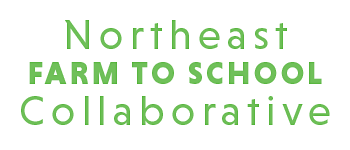
A New England Food Vision describes a future in which our regional food system supports healthy food for all, sustainable farming and fishing, and thriving communities.
Farm to School helps our most vulnerable populations, including the nearly 1.7 million food insecure households in the Northeast*; grows our economy, by keeping our food purchasing dollars here in the region with Northeast producers; and makes our communities more vibrant while ensuring every child has access to healthy, local food. Not only is Farm to School a market opportunity for farmers, but it helps to grow future generations of consumers tied to local products. And we know that every dollar spent on local foods in school meals contributes an additional 60¢ to the economy.***
In 2017, Northeast schools served close to 410 million meals!** That is an amazing opportunity for connecting kids to where our food comes from and what it does for both our bodies and communities.
* Three-year average between 2014-2016. Data compiled from the FRAC State of the States research.
** Data compiled from the USDA Child Nutrition Tables.
*** 2016 Economic Contribution and Potential Impact of Local Food Purchases Made by Vermont Schools by the University of Vermont's Center for Rural Studies.
"These farms are right in the backyards of these schools; it's a win-win."
— Rick Melone, Owner & Farmer, Clearview Farm, Sterling, MA

The Benefits
Health
- Supports the development of healthy eating habits from an early age.
- Improves the quality of school meals so more kids will eat them, contributing to food security for the whole family.
- Helps to reverse the growing obesity rate: nationally, 1 in 6 kids are obese or overweight.
- Increases how much healthy foods kids eat: it has been shown that students in schools with Farm to School programming eat twice as many fruits and vegetables as the national average.
Education
- Helps to increase consumption of healthy school meals means all kids are ready to learn and have an equal start.
- Provides opportunities for hands-on, community-based learning that engages all learners.
- We know that when children are well fed they have fewer discipline incidents and are able to engage in learning.
Economy
- Brings money to local farmers, fishermen, and food producers.
Invests federal school meal dollars in our local economy.
Increases student meal participation, supporting financially healthy school meal programs.
Creates workforce development and job creation opportunities.
Environment
- Keeps local land in farming.
- Reduces food transportation meaning less greenhouse gas emissions.
- Reduces food waste on the farm and at school.
Ready to join?
Organizations in each Northeast state are ready to connect you to the Farm to School movement.

